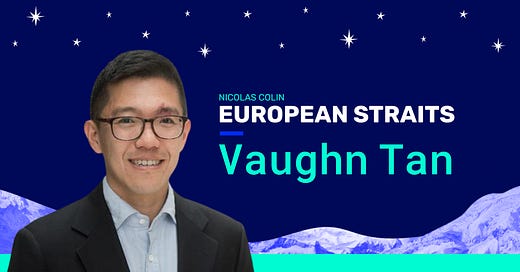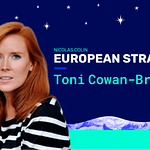The Agenda 👇
A conversation with Vaughn Tan on his book The Uncertainty Mindset
Why automation creates more jobs than it destroys
Learning from the best in capital allocation
My 10 most read paid essays this year
A retrospective of my work on business strategy
More insights for entrepreneurs from The Family
🎄 Merry Christmas 🎄 My wife Laetitia Vitaud’s latest guest on the Building Bridges podcast was Vaughn Tan, author of The Uncertainty Mindset. After spending years visiting the kitchens of some of the world’s most innovative restaurants—a voyage that started with a meeting with José Andrés and went on to include restaurants like Noma—, Vaughn developed some key insights on how organizations can confront one of the key features of the Entrepreneurial Age: uncertainty.
His discussion with Laetitia spans the differences between “risk” and “uncertainty”, balancing efficiency and innovation, and how his “Does this seem fun?” approach to life has led to a vibrant path, taking him from Google to Harvard to France.
👉 Listen to the podcast using the player above, or on your favorite platform: Apple and Spotify 🎧
🤖 Automation Creates Jobs: Here's Proof!
As subscribers to this newsletter, you’ve also seen some of the other gigs that I’ve launched over the recent period, including the Building Bridges initiative (seen above featuring Vaughn Tan) that I work on with my wife Laetitia. One key thing for us from the beginning of the project was needing to make sure we automated as many tasks as possible, since we both have full-time jobs that keep us very busy.
And in truth we do automate much of what goes into producing and sending out the podcasts, for example by using tools that automatically produce a transcript of each podcast discussion. These SaaS tools are quite robust, and yet we’ve found that the work doesn’t end there.
Indeed, as we’ve automated more and more aspects of production, we keep finding new jobs that then subsequently need to be done. Taking the transcript example again, once the SaaS has worked its magic we still need to go through that text, correct it for context and readability, and then have it translated (since we’re trying to reach as many European audiences as possible). These tasks, being quite delicate, require human intervention—and so we’ve found that our automation process really does create even more jobs to be done!
👉 I outline how we’ve developed our process in Automation Creates Jobs: Here's Proof!
💰 Every Successful Business Has Two Financial Loops
Most people’s thought process regarding a given business doesn’t go beyond the simple relationship of supply and demand: customers want a product, and the business is there to provide it. On the other hand, few people think about the financial loop underlying a McDonald’s hamburger—yet even with billions and billions served, we can say that the business hasn’t been built on just the beef itself.
In fact, businesses that are successful over the long term almost always have two financial loops that nourish each other. One is the short-term ‘trading’ process that generates free cash flow. The other, oftentimes hidden from customer view, is found in the long-term game of doing ‘capitalism’. This involves finding ways to insert capital into the value chain in order to enjoy increasing returns to scale.
For an entrepreneur, it’s important to understand how your business can build up those two interacting loops. There are many examples from which to take inspiration: the aforementioned McDonald’s and its real estate division, Goldman Sachs and the shift from advisory to investing, and of course Warren Buffett’s Berkshire Hathaway and its legendary “insurance float”.
👉 Read more about effective capital allocation in Every Successful Business Has Two Financial Loops.
📖 My 10 Most Read (Paid) Essays This Year
It’s always interesting, as a writer, to see which pieces resonate the most with one’s audience. One benefit of taking a break at the end of the year is going back into the data and seeing which articles were most read and shared (and which ones weren’t 😢).
My first ‘vacation edition’ this year consisted of the list of my most read paid essays this year. There isn’t necessarily a pattern in terms of topics: they cover everything from liquidity and exits to my own methodology for writing about investment opportunities.
The one pattern I do note is that all of the most-read essays came from the latter half of this year. And I suppose that goes to show that the real key to pulling more eyeballs to a given topic is simply having a growing subscriber base. So check them out, and hopefully one or two could give you that extra push to become a paid subscriber in the new year!
👉 I link to them all in My 10 Most Read (Paid) Essays This Year—curation accessible to everyone.
💼 Shifting Patterns Across Industries
I’ve long been interested in how certain patterns are seen over and over again as the current paradigm shift impacts individual industries. Some industries shifted earlier than others, as seen with music and advertising changing earlier than, say, construction and healthcare. But that simply means the framework that was revealed in those earlier industries can now be used to predict the future of the late-comers.
It’s a topic I’ve been writing about for over 5 years now, as it touches so many aspects of doing business in the 21st century, ranging from management to customer care to corporate finance. And I’ve been very pleasantly surprised to see how a framework that I first developed to explain the music industry can be applied to education, wealth management, restaurants and more.
And it’s in those industries that have resisted (relatively speaking) the transition to the digital age where I believe my framework can be most useful to budding entrepreneurs. After all, there are still many opportunities out there waiting to be seized by ambitious entrepreneurs 😉
👉 I included quite a few resources in Shifting Patterns Across Industries—curation accessible to everyone.
Sounds interesting? Subscribe to European Straits and let me know what you think!
🎄 We’re almost to Christmas, which means The Family’s daily newsletter has almost completed its advent journey. We’ve been sharing a daily startup lesson in preparation for the start of our newest batch of startups in January. Over the past week my fellow directors and I have talked about topics including:
From On Jerry Neumann's “Productive Uncertainty” (Round 1)
Jerry Neumann is an infrequent but consequential blogger. His 2015 article Power Laws in Venture is a must-read in the venture capital world. More recently, he’s expressed his interest in the concept of uncertainty as a potential cornerstone for rebuilding the discipline of business strategy. However it was difficult to dig into the details of his thinking since he effectively stopped publishing for several months—basically the entire period during which the world has been struck by COVID-19.
All recent editions:
Shifting Patterns Across Industries—for everyone.
My 10 Most Read (Paid) Essays This Year—for everyone.
Every Successful Business Has Two Financial Loops—for subscribers only.
Automation Creates Jobs: Here's Proof!—for subscribers only.
The mirage of deep tech. Bob Dylan. Atomico on Europe. Building IRL bridges. Selling short.—for everyone.
Shorting Companies in the Transition—for subscribers only.
Infrastructure and Growth—for subscribers only.
On Atomico’s 2020 State of European Tech Report—for subscribers only.
Five Trends Revealed By the Music Industry—for subscribers only.
Reinventing the State w/ Mariana Mazzucato. The gig economy. Brexit. Silver Lake. Tony Hsieh and Las Vegas.—for everyone.
European Straits is a 5-email-a-week product, and all essays are subscriber-only (with rare exceptions). Join us!
From Munich, Germany 🇩🇪
Nicolas




















Share this post